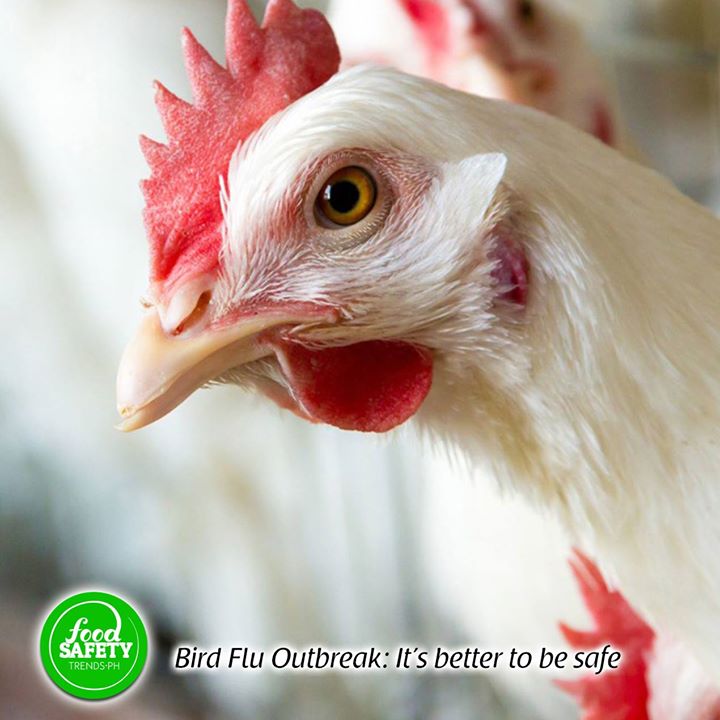Bird Flu Outbreak: It’s better to be safe

The news of Bird flu hitting some areas of Central Luzon, Philippines alarmed the nation. Further confirmed by the Department of Agriculture-Bureau of Animal Industry (DA-BAI) through the Australian Animal Health Laboratory, the bird flu strain is H5N6, which is transmissible to humans. The virus can be transmitted to humans through inhalation or contamination with infected discharges or feces of sick chickens or infected birds. Signs and symptoms of bird flu contamination include cough, diarrhea, fever over 38°C, headache, muscle ache, runny nose, sore throat, and respiratory difficulties.
Dr. Arlene Vytiaco of DA-BAI, however, said that the transmission rate to humans is very low, it only causes low morbidity and the mortality rate is even lower. Nonetheless, it is better to be safe, and here’s how:
-Avoid, if possible, poultry farms, contact with animals in live bird markets, entering areas where poultry may be slaughtered, or contact with any surfaces that appear to be contaminated with faeces from poultry or other animals. Otherwise, observe strict biosafety practices.
-Wash your hands often with soap and water. Follow good food safety and hygiene practices.
-Cook chicken properly at a temperature of 165°F or 73.88°C. The meat should have no pink parts.
Sources: Department of Agiculture, Department of Health, Rappler, World Health Organization
Photo Source: www.caes.uga.edu
#FoodSafetyLifeMatters
#FoodSafetyPhilippines
#FoodSafety
#GlenwoodTechnologies
#BirdFlu
#AvianInfluenza
#BirdFluPhilippines
#H5N6
#FoodSafetyTrendsPHMagazine
#BirdFluOutbreak





